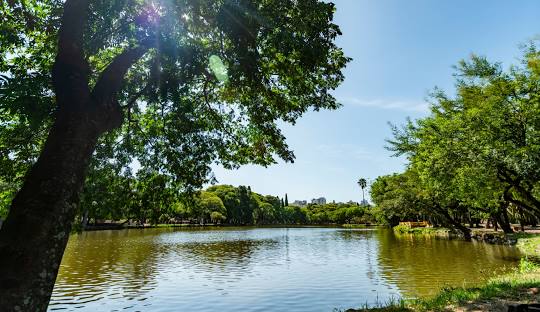Português LAND USE IN REGIONS CLOSE TO SUBWAY STATIONS IN THE CITY OF SÃO PAULO: urban mobility and sustainable planning
DOI:
https://doi.org/10.18764/2236-4358v14n41.2024.4Keywords:
Land-use, Public transportation, Urban planning, TODAbstract
Public transportation is an essential element of urban environments, directly impacting the quality of life of millions of people. The interaction between public transit and land use is fundamental for sustainable urban development, especially in large cities. This study analyzes 74 subway stations in São Paulo, focusing on land use and population characteristics in adjacent areas. Some regions present a diversified land use, while others show a higher concentration of specific uses, with a focus on residential and commercial areas. The applied methodology can be improved and used to support public policies and more efficient urban planning strategies.
Downloads
References
CARVALHO, C. H. R. DE. MOBILIDADE URBANA SUSTENTÁVEL: Conceitos, Tendências e Reflexões. 2016.
FERRAZ, A. C. P. “COCA” et al. Transporte Público Coletivo Urbano. São Carlos. RiMa Editora, 2023.
GIL, A. C. Métodos e Técnicas de Pesquisa Social. 6. ed. São Paulo. Atlas, 2008.
IBGE – INSTITUTO BRASILEIRO DE GEOGRAFIA E ESTATÍSTICA. Censo Brasileiro de 2022. Rio de Janeiro. IBGE, 2023.
ITDP. Padrão de Qualidade DOTS 3.0. 3. ed. Nova Iorque. ITDP, 2017.
LAKATOS, E. M.; MARCONI, M. de A. Fundamentos de Metodologia Científica. São Paulo. Atlas, 2010.
NAKAZAWA, M. FMSB: Functions for Medical Statistics Book with some Demographic Data., 2024. Disponível em: <https://cran.r-project.org/web/packages/fmsb/index.html>
PMSP, P. M. DE S. P.: SISTEMA DE CONSULTA DO MAPA DIGITAL DA CIDADE DE SÃO PAULO: Disponível em: <https://geosampa.prefeitura.sp.gov.br/PaginasPublicas/_SBC.aspx>. Acesso em: 13 set. 2024.
POSIT TEAM. RStudio: Integrated Development Environment for R: Integrated Development Environment for R. Posit Software, PBC, Boston, MA, 2024. Disponível em: <http://www.posit.co/>
QGIS DEVELOPMENT TEAM. QGIS Geographic Information System. Geospatial Foundation Project, 2024. Disponível em: <http://qgis.osgeo.org>
SCHAFER, A.; VICTOR, D. G. The future mobility of the world population. Transportation Research Part A: Policy and Practice, v. 34, n. 3, p. 171–205, 1 abr. 2000.
VALE, D. S. TRANSIT-ORIENTED DEVELOPMENT, INTEGRATION OF LAND USE AND TRANSPORT, AND PEDESTRIAN ACCESSIBILITY: Combining node-place model with pedestrian shed ratio to evaluate and classify station areas in Lisbon. Journal of Transport Geography, v. 45, p. 70–80, 1 mai. 2015.
VALE, D. S.; VIANA, C. M.; PEREIRA, M. THE EXTENDED NODE-PLACE MODEL AT THE LOCAL SCALE: Evaluating the integration of land use and transport for Lisbon’s subway network. Journal of Transport Geography, v. 69, p. 282–293, 1 mai. 2018.
YIN, R. K. ESTUDO DE CASO: Planejamento e Métodos. 5. ed. Porto Alegre: Bookman, 2015.
Downloads
Published
How to Cite
Issue
Section
License
Copyright (c) 2024 Revista Húmus

This work is licensed under a Creative Commons Attribution 4.0 International License.







